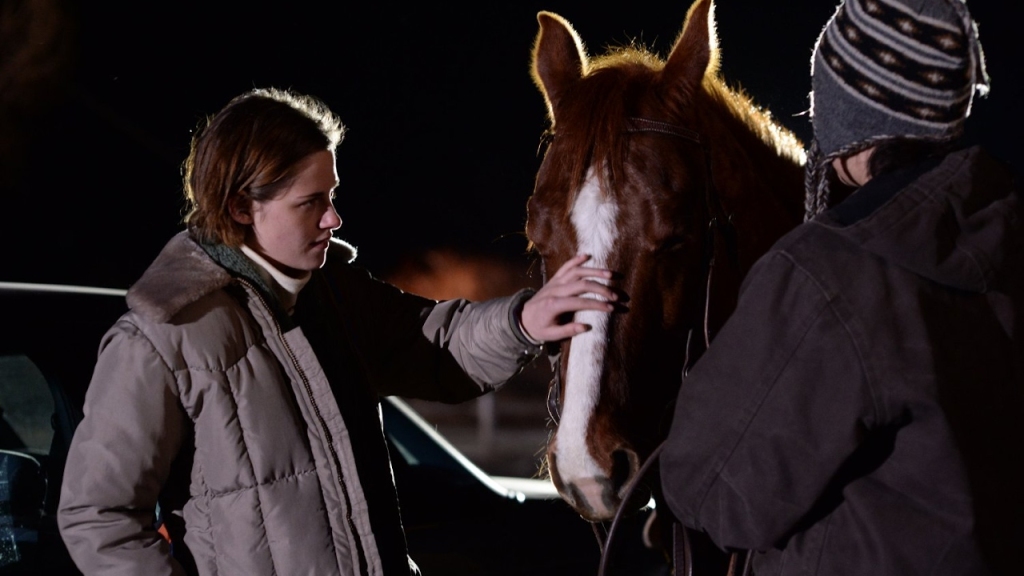Kelly Reichardt’s Certain Women (2016) is set in and around Livingston, Montana. Though shot in full color by cinematographer Christopher Blauvelt, it has the effect of a muted black-and-white film. Some of that has to do with when the film is set: winter, when Montana’s arid plains are dusted by flurries of snow that whorl silently in the bone-chilly air. But more of it has to do with whom the movie concerns itself: a handful of women suggested to have been deprived of joy for years — whose implicit want to be heard and understood continues to go unmet.
Certain Women is based on a trio of tales included in Maile Maloy’s short-story collection Both Ways Is the Only Way I Want It (2009). Reichardt’s adaptation of them is similarly structured (it unfurls episodically) though subtly nods at different points to where its characters unknowingly cross paths, in some instances only superficially and in others more significantly. There is Laura (Laura Dern), a lawyer having a meaningless lunch-break affair being bothered lately by an increasingly disgruntled client (Jared Harris) who can’t let go of the discouraging legal resolution to a workplace injury. There’s Gina (Michelle Williams), a woman whose emotionally distant husband (James LeGros) is building her a home from scratch in an expanse of untouched land in an overwrought attempt to connect with her. And there’s Jamie (a heart-shattering Lily Gladstone), a practically ascetic rancher who develops a strong, unrequited crush on a young teacher (Kristen Stewart) whose night classes she starts attending one evening on a whim.
Certain Women’s slice-of-life stories are unconcerned with narrative conventions to the point of anticlimax. That sentiment feels less true, though, when applied to the Gladstone segment, a tale of love unreturned so matter-of-factly devastating that I sometimes found myself laughing to soften the secondhand anguish. The movie’s most indelible image is maybe of Gladstone driving away after a romantic gesture deflates on impact, her face understatedly translating a swirl of bottomless heartbreak and mortification. Or maybe it’s the one of her walking alone past cozy main-street restaurants packed with diners happy to be in each other’s company. I hadn’t seen the movie since it came out; Gladstone’s storyline had remained, and will probably still remain, with me the most. I could still vividly picture the inadvertently hurtful Stewart exhaustedly looking back at a woman whose adoration blurs how thoroughly not in a place for love the Stewart character is. (She got the towns mixed up when she signed her teaching contract and is now stuck in a limbo where she’s commuting a total of eight hours for every session.)
Time eventually turns Certain Women’s in-the-moment anticlimacticness into something more haunting. Writing for the first time without regular screenwriting partner Jon Raymond, Reichardt sneakily captures the loneliness of these women so acutely that the feeling of being with them, of being stuck in their cycles of alienation, sticks with you. Like most of Reichardt’s other movies, Certain Women’s brand of sadness doesn’t feel miserablist, melancholy for melancholy’s sake. With their lack of rosy endings and willingness to take seriously lives devoid of the kind of extraordinary dramas we’re used to seeing movie characters navigate, her films can make you feel seen.
